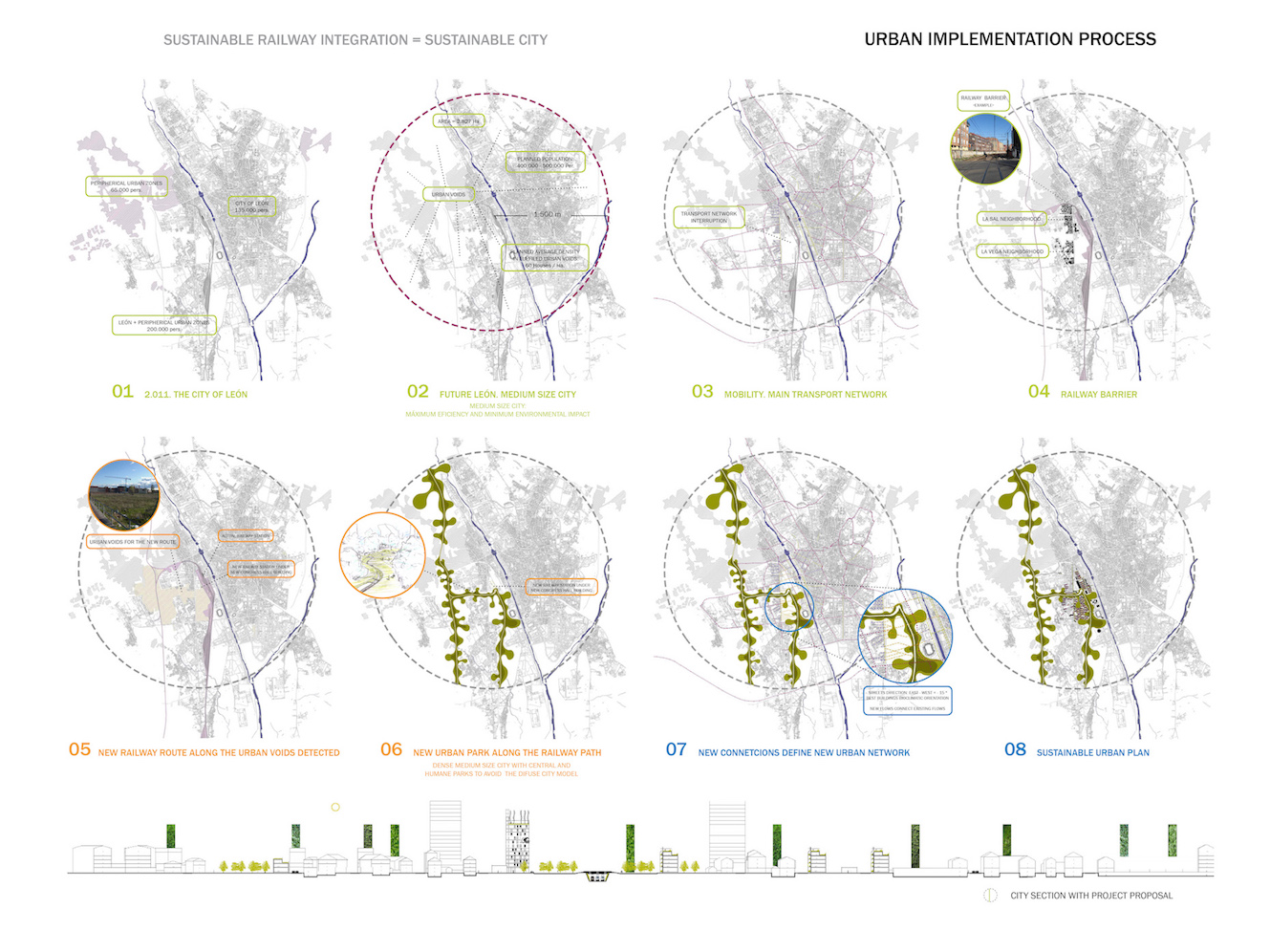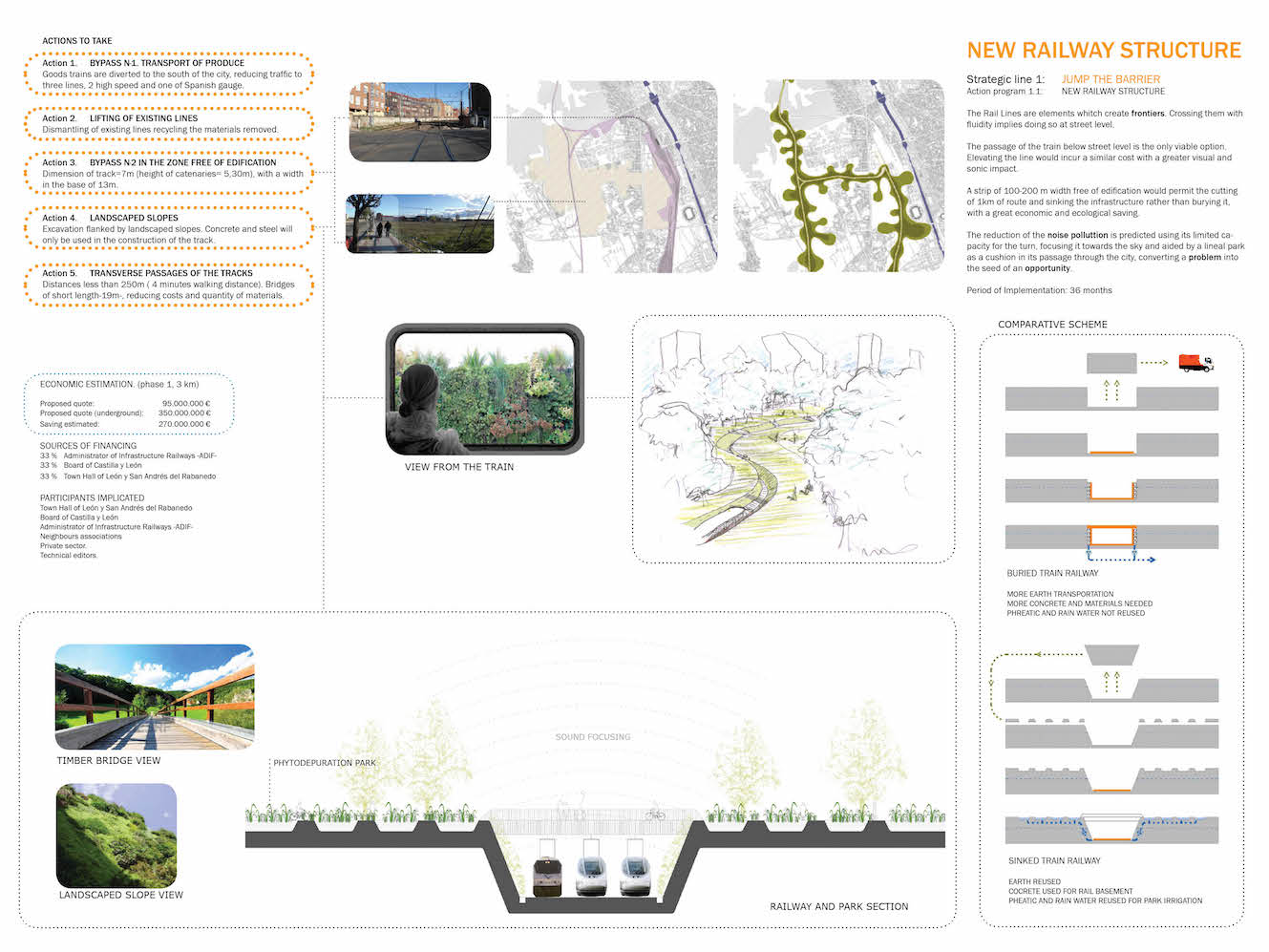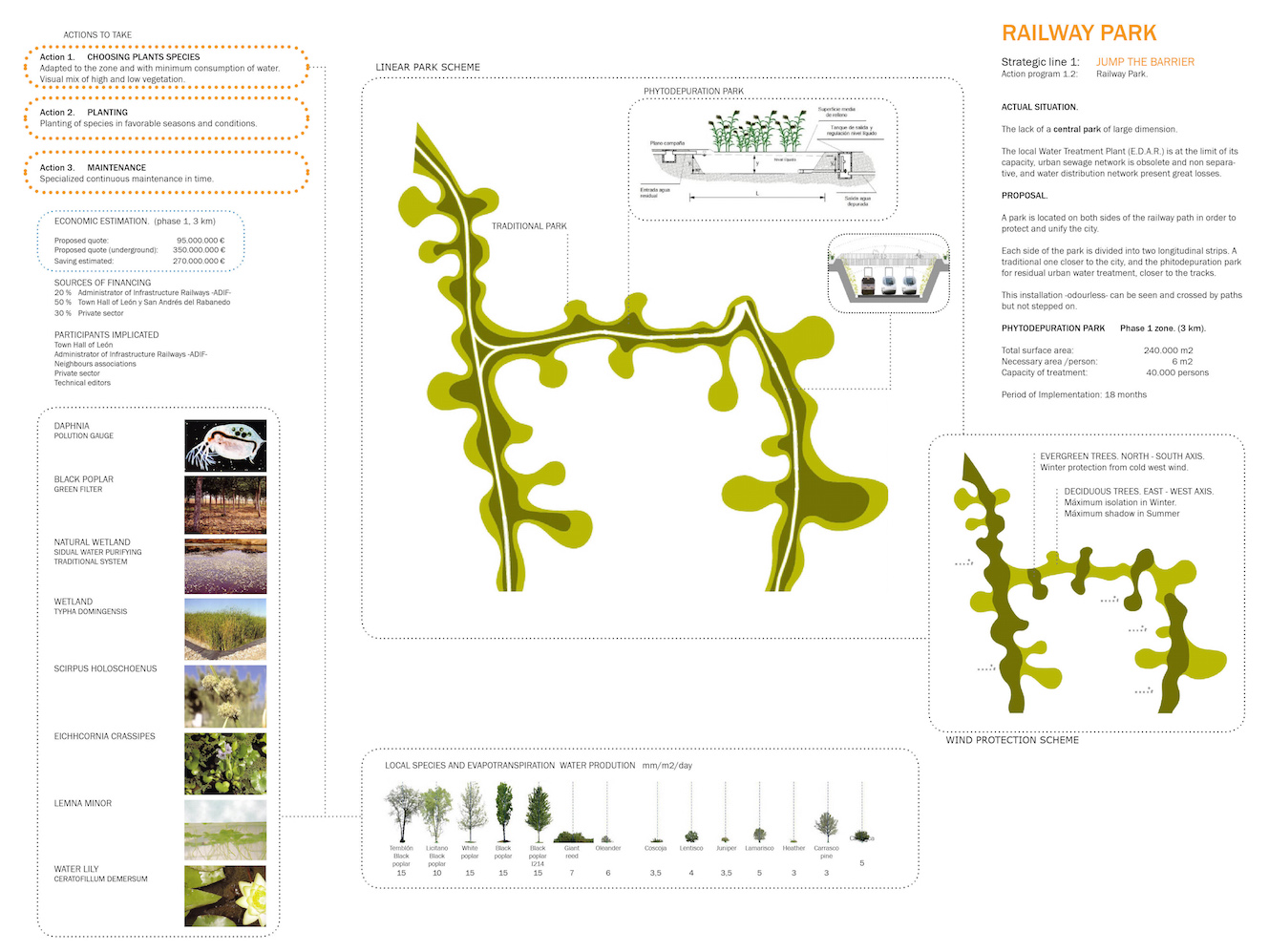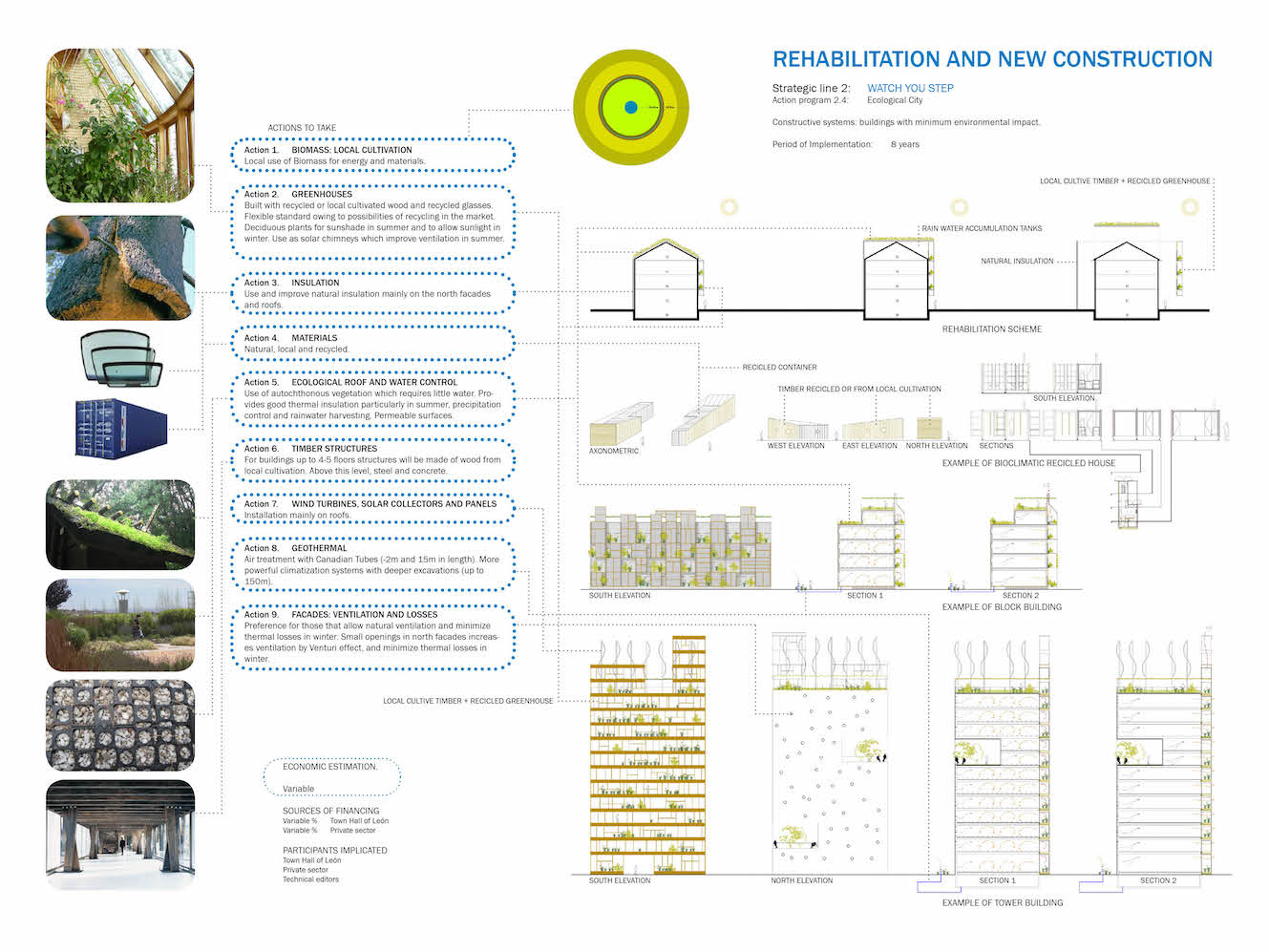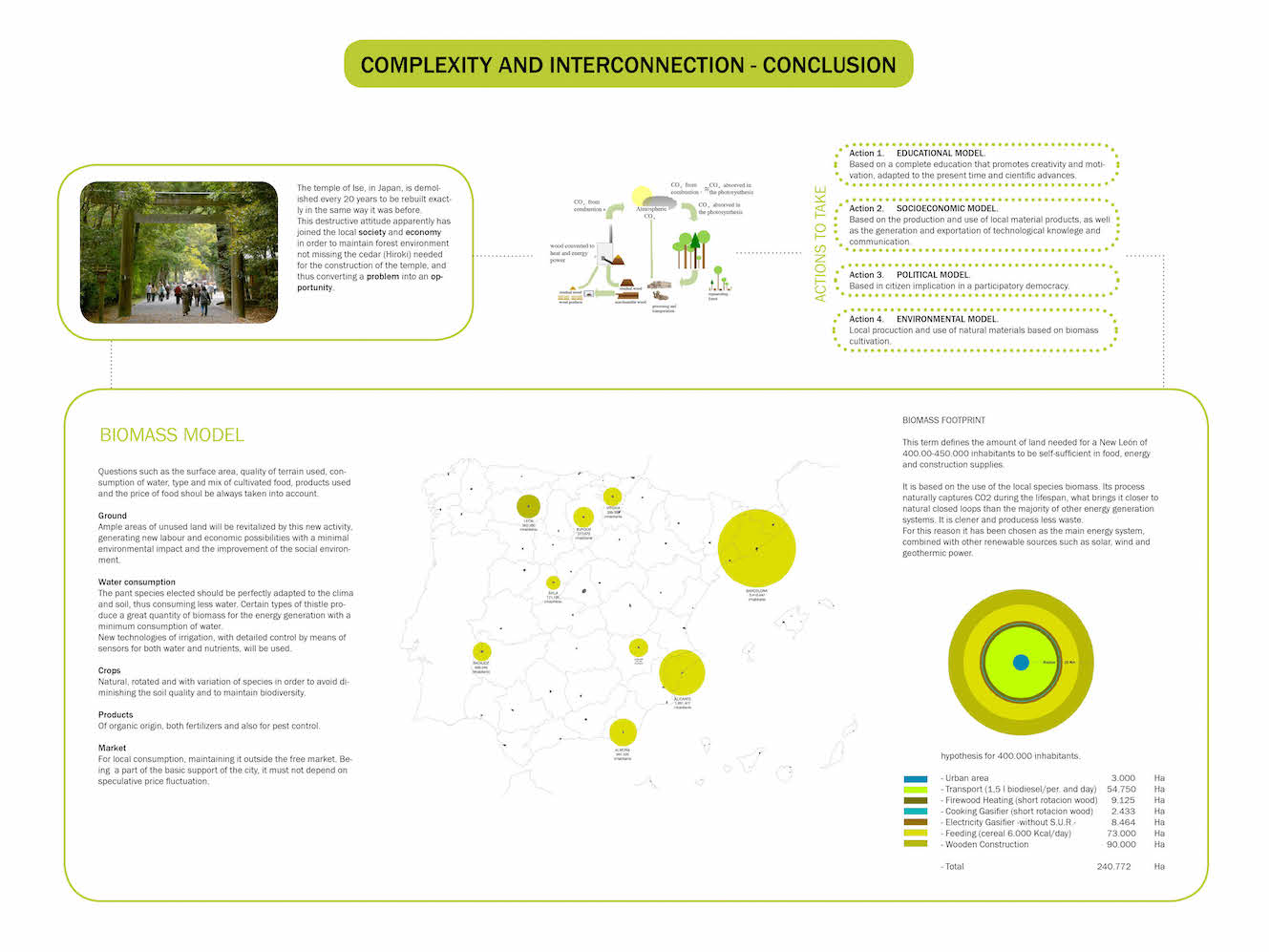León, Spain. SB10Mad Competition. Mention
Author: Raúl Alonso Estébanez
Wright Mills said that the individuals are trapped -and interconnected- between their private orbits and the global history of their societies. Almost a century before, Max Weber and Emile Durkheim considered the degree of influence of the individual on his society and vice versa. Since those days, our cities and societies have grown and changed a lot, and the concept of complexity is probably what best defines both of them. First Industrialization methods are unable to solve current glocal problems, and it becomes necessary to create innovative strategies of broader perspective, transdisciplinarity and transferability, includding the educative system in the equation.
From the junction of the concepts of complexity and interconnection was born the philosophy of this project, creating an opportunity to redefine part of the city of León and its future planning into a sustainable dimension of 400.000-500.000 inhabitants, from a specific question, the need to remove the barrier made by the railway infrastructure trough the city center. It goes above the architectural and urban scale to propose a socio economical system balanced with the environment. It has a local scale for the production and use of physical products, a global scale for the generation and exportation of (immaterial) knowledge, and a socially scale for the participation method developed to let citizens to choose what they need.
To move the train route from a densely populated area to an area of disused parcels (shorten the route 1 km), to decrease tracks level to cross them at street level, just digging, avoiding covering the infrastructure with concret and to cover it with landscaping, means a significant economic, environmental and social improvement. It’s possible due to the park proposed, born in the core of the new neighbourhood with three main functions: the traditional, as a green lung and meeting place, the abatement of noise pollution caused by passing trains, and the natural treatment of urban sewage. These multiple uses serve as a seed in the proposition of a compact and dense city, and can provide – through organic cultivation aided by new technology- materials enough to energy supply, food, construction and leisure needings, such as the example of Ise Wood in Japan, remaning unalterable to provide the timber for its sacred Temple periodical reconstruction.



